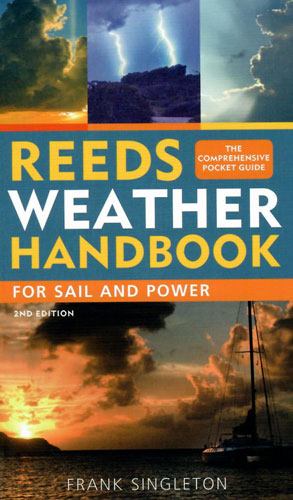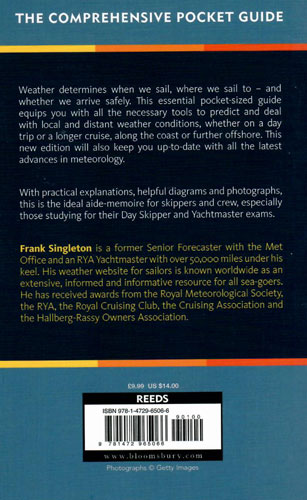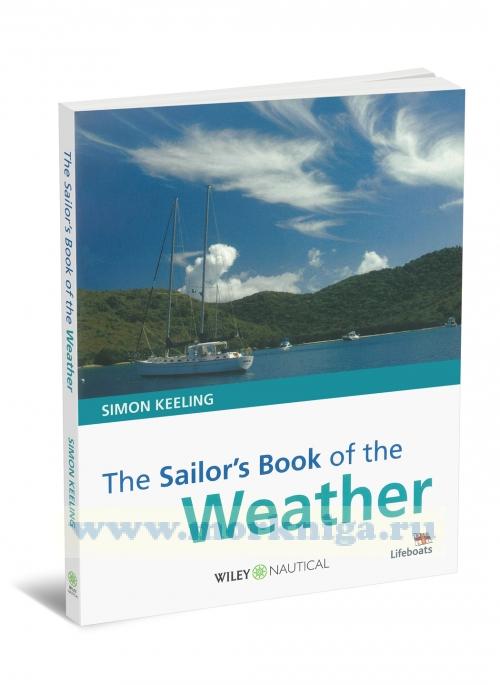Reeds Weather Handbook (2nd edition)/Справочник по погоде (2-е издание)
Издание на английском языке
Weather determines when we sail, where we sail to – and whether we arrive safely. This essential pocket-sized guide, now revised for its second edition, equips the reader with all the necessary tools to predict and deal with local and distant weather conditions, whether on a day trip or a longer cruise, along the coast or further offshore.
Each topic is broken down into digestible chapters, explaining the origins and effects of the full spectrum of weather conditions, including: using and evaluating weather forecastsdepressions, fronts, isobars and other coastal effects waves and swell weather lore and sky watching.
Meteorology is still advancing and sources of forecasts are changing. This new edition keeps the handbook up-to-date, with a particular focus on the increasing use of GRIB files, computer weather modelling and sources of forecasts, especially with the proliferation of computer forecasts becoming available free of charge.
With practical explanations and helpful diagrams and photographs, this is the ideal aide-memoire for skippers and crew, especially those studying for their Day Skipper and Yachtmaster exams.
См. также Reeds First Aid Handbook
См. также Reeds Maritime Flag Handbook
См. также Reeds Knot Handbook
Contents
Introduction
Air masses
Understanding air masses
Air directly from polar regions
Air indirectly from polar regions
Air from the subtropics
Tropical air
Air mass with a land track
Fog
Sea fog areas
Other causes of sea fog
Showers and thunderstorms
Lightning
Lightning protection
Avoiding the risk
Other dangers of thunderstorms
Fronts and depressions
Frontal lows and their formation
What you may see at sea level
Occluded fronts
Interpretation of synoptic charts
Non-frontal lows
Sea and land effects
How breezes are formed
The sea breeze front
What affects the sea breeze?
Land breezes
Sea/land breeze cycles
How strong? How far out to sea? How far inland?
Cliffs, straits and headlands
Summary
Waves and swell
Understanding sea state
Wind waves
Swell
Water depth and tidal stream
Reflection and refraction
Sea state - general advice
Lagoon, bay and seiche effects
Tsunamis
Weather forecasting -the background
Why weather prediction is so difficult
Before computers
Numerical weather prediction (NWP)
Limitations to NWP
Ensembles and probability forecasts
Grid spacing
Small-scale NWP
Summary
Using forecasts - and your experience
Planning
Weather and whether to go?
Day sailing and coastal passages
Passage making
Examples
Learning by experience
Ocean crossings
Summary
Sources of weather information
Types of marine forecast available
The Global Maritime Distress and Safety System (GMDSS)
Forecast areas Forecast texts
Other GMDSS services
GRIB files and products
Basic (free) services
Processed or selected GRIB data
Fine-scale processed GRIB data
On prepayment
Consultants
Actual weather reports
Summary
Getting forecasts
Radio or internet?
Marine VHF and MF NAVTEX
MF/HF/SSB radio
The internet
Internet access - coastal and ashore
Internet access - long range
Observing - learning by experience
Weather lore and rules of thumb Nowcasting
Examples of unusual cloud patterns
Mountain waves Bora cloud
Mammatus cloud
Appendix
Acronyms and abbreviations
Meteorological terms
Terms used in marine weather forecasts
Beaufort wind scale
Douglas sea state
Gale and strong wind warnings
Wind direction
Visibility
Terms used in UK Met
Office forecasts
Gale warning timings
Movement of pressure systems
Pressure tendency in station reports
Sources of information
Index




 The Sailors Book of the Weather
The Sailors Book of the Weather